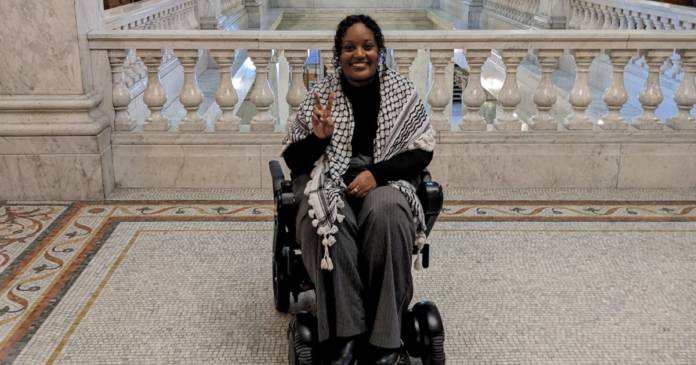“The Keffiyeh Ban at Queen’s Park Sparks Controversy”
In a surprising turn of events, independent MPP Sarah Jama found herself at the center of a heated debate after being asked to leave the Ontario Legislature for refusing to remove her keffiyeh. The speaker deemed the traditional Arab scarf a political prop and therefore banned it from Queen’s Park. Amidst the chaos, protesters wielding keffiyehs disrupted the legislative session, prompting Speaker Rick Nicholls to call for a recess.
Conflicting Perspectives Unravel
Premier Doug Ford and Government House Leader Paul Calandra were swift to distance themselves from the incident, emphasizing that the speaker, not the government, made the decision to remove Jama. Meanwhile, NDP MPP Joel Harden argued that the keffiyeh symbolizes trade routes, fishing nets, and olive trees in Palestine, emphasizing its cultural significance. He condemned the ban, stating that it only serves to deepen divisions and sow hatred within the community.
The Origins of the Keffiyeh
The keffiyeh has a long history as a symbol of Palestinian resistance to Israeli occupation, dating back to the Arab Revolt in Palestine in 1936. Its recent resurgence in activist circles following Hamas’ attack on Israel has sparked debate over its usage and meaning. Despite not being of Palestinian descent herself, Jama’s defiance in wearing the keffiyeh in the legislature has drawn attention to the broader issues of civil liberties and cultural representation.
Conclusion: A Call for Understanding and Unity
As the controversy surrounding the keffiyeh ban at Queen’s Park continues, it is crucial to acknowledge and respect the diverse perspectives at play. While some view the scarf as a symbol of resistance and cultural heritage, others see it as a provocative political statement. By engaging in open dialogue and listening to each other’s experiences, we can work towards a more inclusive and understanding society where all voices are valued. In the end, it is through empathy and mutual respect that we can bridge the divides that threaten to tear us apart.
Reference















